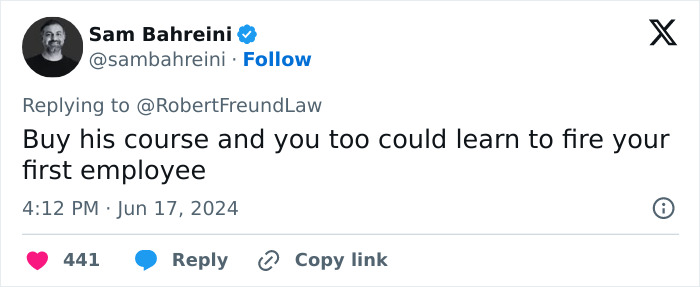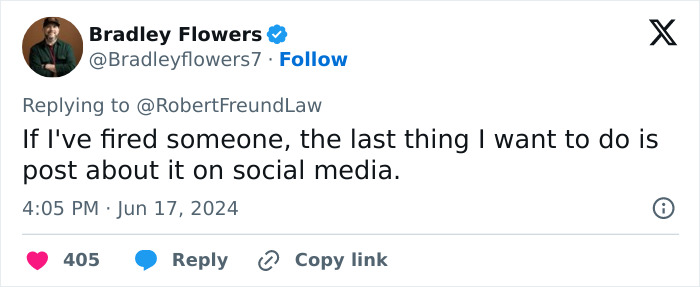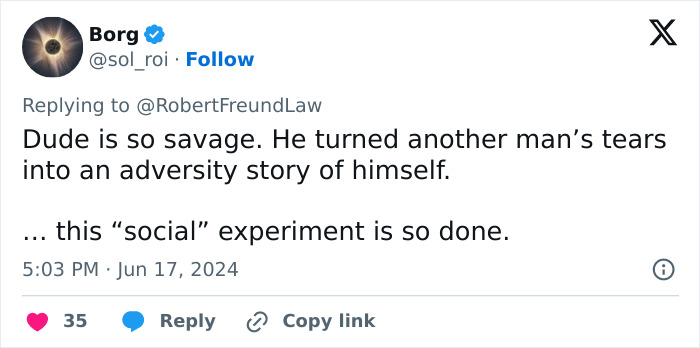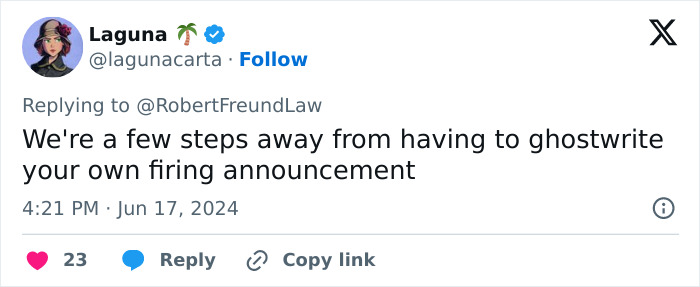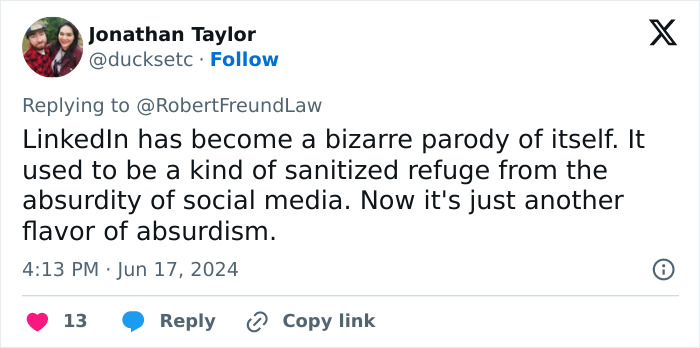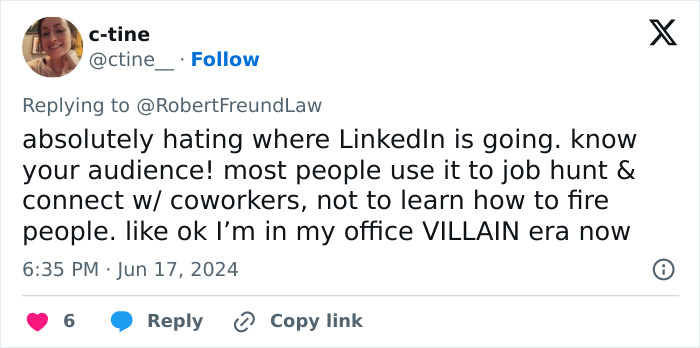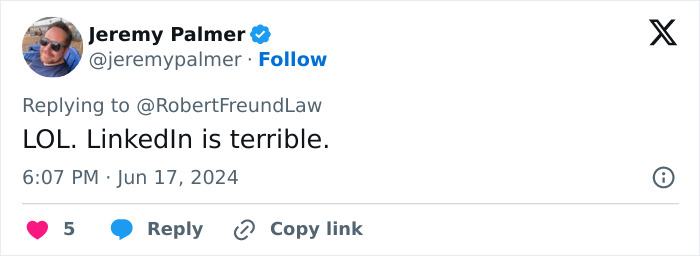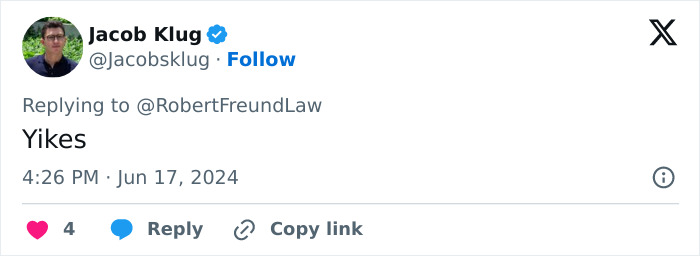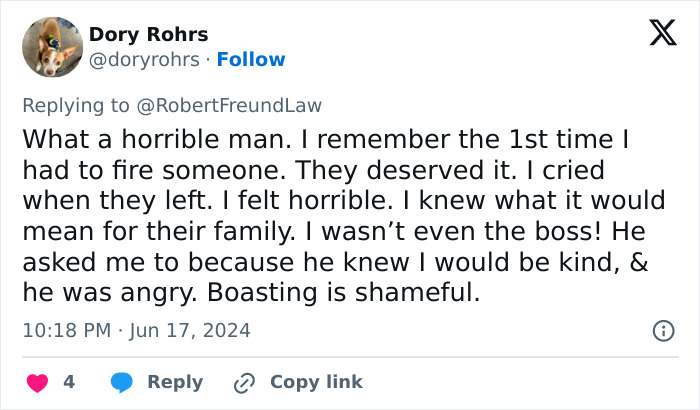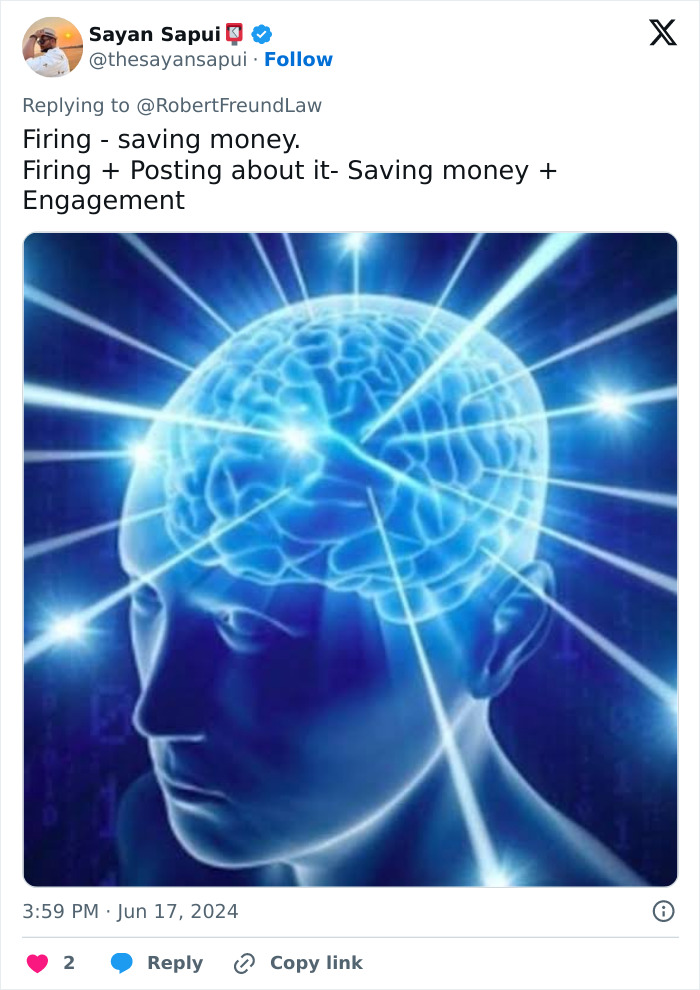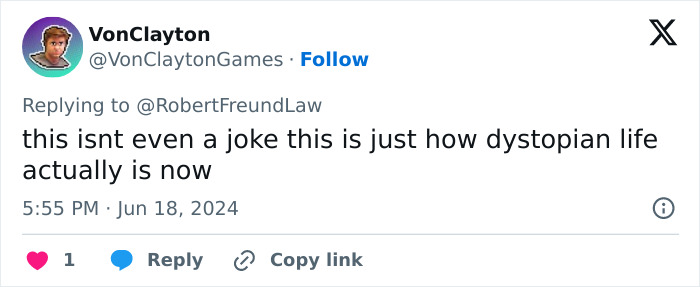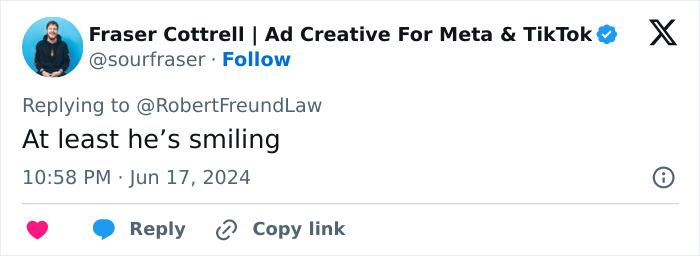Everyone wants to get famous or go viral by creating the most amazing content. But it seems like some folks go to the most extreme lengths to make that a reality. One of the surest places you’ll find this happening is on LinkedIn, where CEOs, bosses, and normal people try to create viral hooks for their posts.
The most recent example was by a founder who posted about firing his employee and the “lessons” he learned from doing so. It’s up to you to decide whether it was a great content idea or just wildly insensitive.
More info: LinkedIn
Some viral posts on the Internet will really make you question if all publicity is truly good publicity
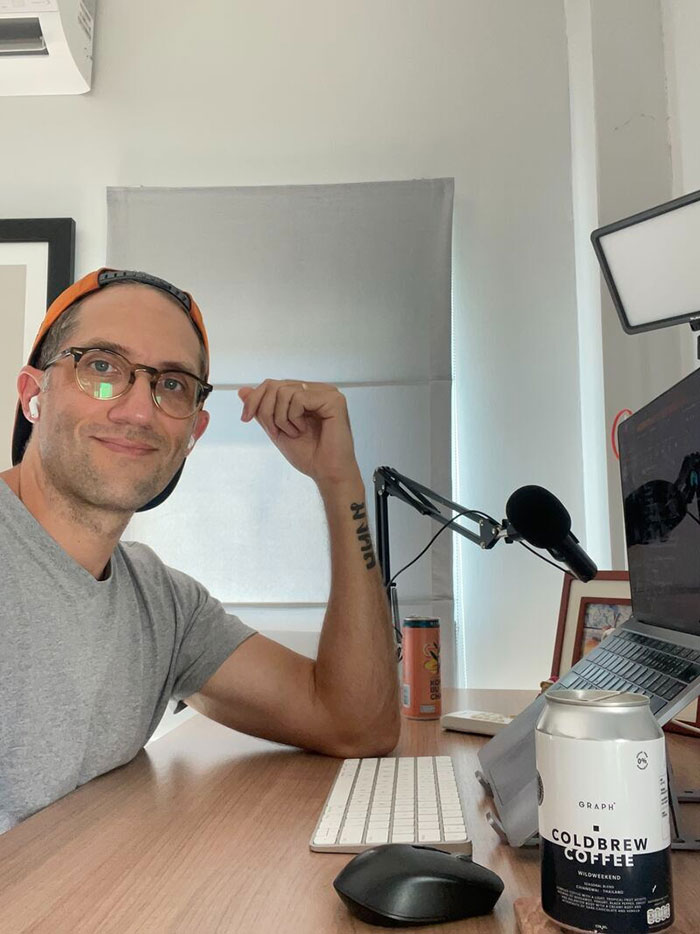
Matthew Baltzell is the founder of Cap X Media, who received a lot of flak online for making a business lesson post based on firing an employee for the first time
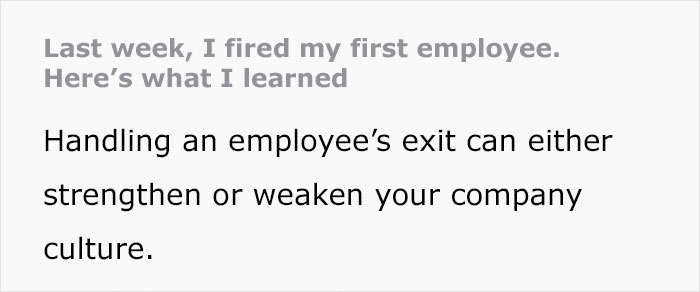
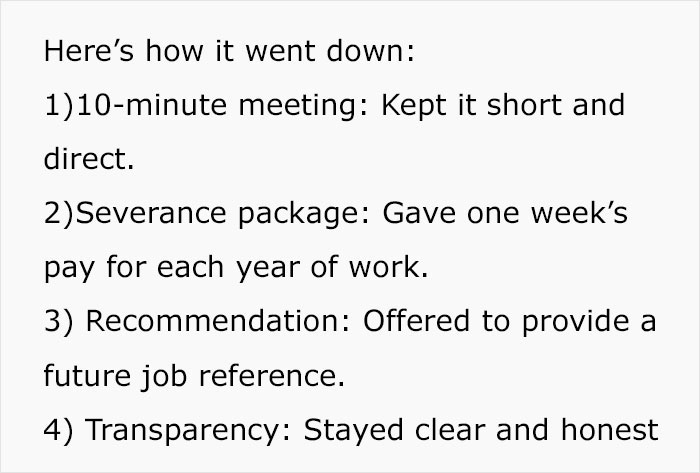

He shared 4 firing tips that people could learn from and also explained how the person who got fired handled the experience

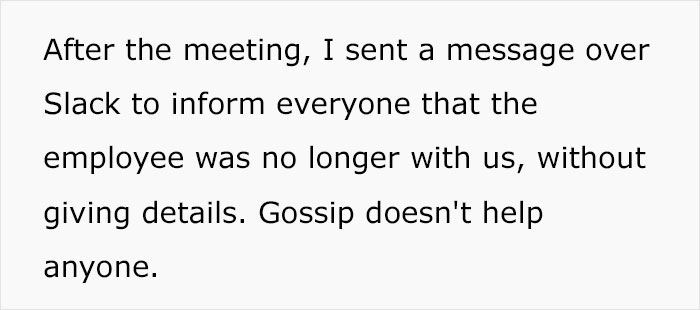
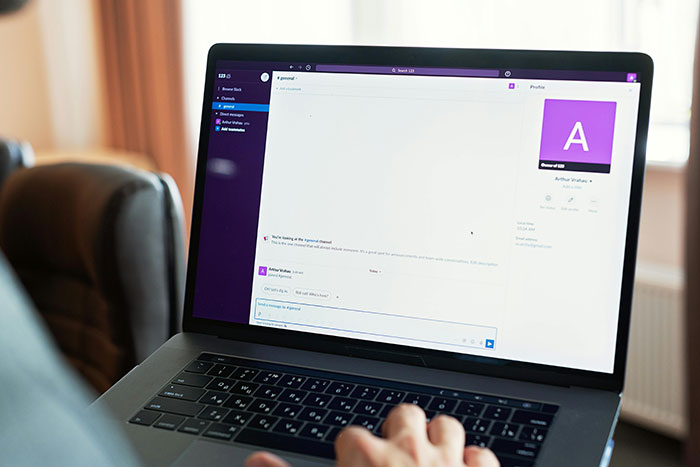
Matthew ended his post by asking folks if they enjoyed his small business lesson, but we’re not sure what was so fun about it
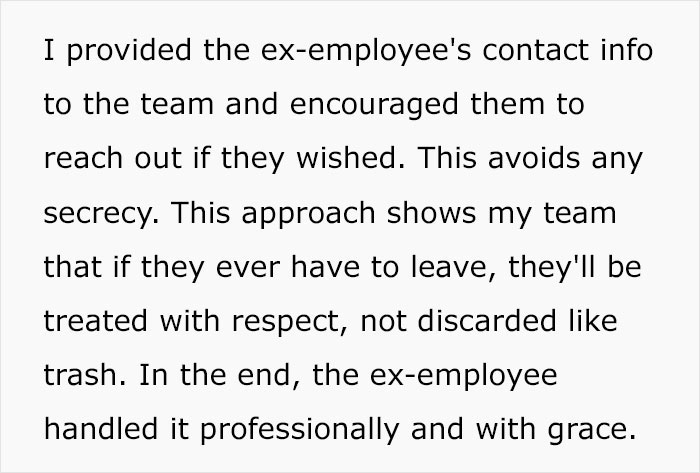
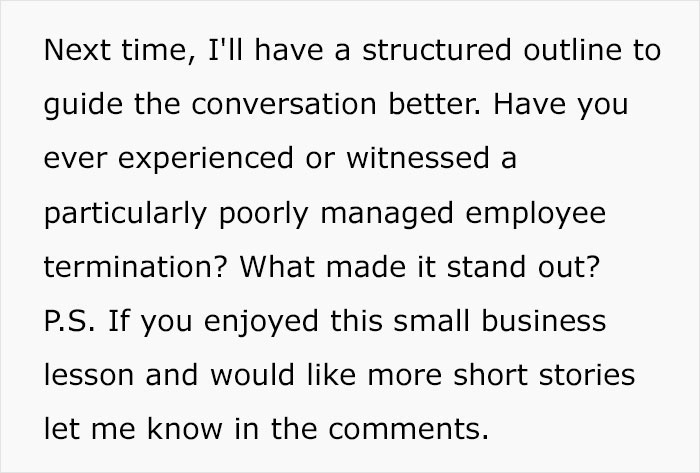
Image credits: Matthew Baltzell 🌴
LinkedIn is now becoming full of stories like this, where folks use personal life incidents to promote their business, teach lessons or strategies, and gain an audience
Getting fired is an incredibly difficult experience. Folks who get terminated from their jobs often go through a wide range of emotions. For many, there’s a sense of grief, fear, and shock. It can, therefore, be difficult for a person going through such a tough experience to read a post like this.
To learn more about these kinds of personal stories on LinkedIn and whether they’re a good idea, Bored Panda reached out to Jagriti Jain. She is a self-proclaimed “work in progress” who started out as an international banker and now works as a writer and LinkedIn personal branding strategist. She also runs a digital marketing agency called JJ Ventures.
We asked Jagriti why so many creators use personal stories, traumatic experiences, or weird incidents as content for LinkedIn. She said, “People want to read real-time stories. I am somebody who reads LinkedIn posts for a living, and if I see a post that does not catch my attention in the first two lines, do you think I’m going to [keep reading it]?”
She also explained, “If I do not see something that resonates with me or something that intrigues me, I’m not going to read it. There is no better way to create engaging or authentic content without a personal story. The example that you gave me: ‘here are things I learned from firing my employee,’ that was very catchy.”
As Jagriti mentioned, “People want to read something that they relate to. It’s all about figuring out that one voice that speaks to you, and that’s exactly why personal stories work.” Matthew’s post did just that. It drew from an experience he had, while also connecting to his brand. That’s why it probably drew so much attention.

Many views and comments on Matthew’s post came from folks who couldn’t believe he’d use an employee’s termination for content. That’s why we asked Jagriti why anyone would want to get such negative attention in the first place. She put it simply by stating, “There is no such thing as bad publicity.”
“Even if it’s negative engagement, it is [still] engagement, and it is getting me a lot of followers, even if those are trolls. Those people are coming to my profile, commenting, engaging, putting in hate comments, but it’s publicity in its authentic sense. The LinkedIn algorithm works in such a manner that if you are commenting on my post, they might not possibly see what the comment is, but they will definitely push my post toward your followers.”
“The point is, even if it’s a negative thing, if it is getting me sales leads, I think it’s a job well done. It’s essentially pushing the algorithm in such a way that more people are engaging, and that’s the whole idea of being on social media, right? You need people to see you. You’re there for social validation–whatever it takes.”
When it comes to posting online, it can feel like walking a tightrope between creating socially acceptable content or sharing more controversial ideas. Experts state that you shouldn’t shy away from difficult topics, but you should write about them in a compassionate manner.
We asked Jagriti how people should approach posting on LinkedIn. She said, “I think the primary job is to figure out why you are on LinkedIn. Are you there just to look, just to understand how things work in the digital world, create brand positioning, or get sales for your business? It’s all about strategies, one way or the other, but personal stories are the starting point.”
According to Jagriti, personal stories are non-negotiable. It does make sense in a way because all of us talking about and criticizing Matthew are giving him the viewership that he probably wants. In fact, his story went viral online, with one X user getting 1.5 million views on his tweet dissing the LinkedIn post.
What do you think about the situation? Do you think Matthew’s a genius for what he did or just a LinkedIn lunatic? Let us know your thoughts in the comments.
People could not believe anyone would write such a tone-deaf post, and one netizen made a joke about it being similar to that of the infamous “Crying CEO”

